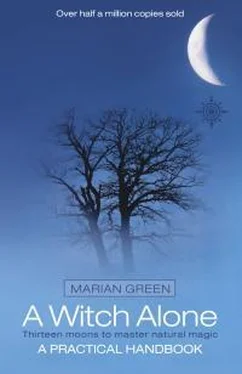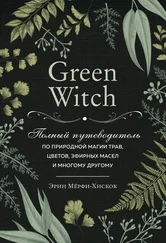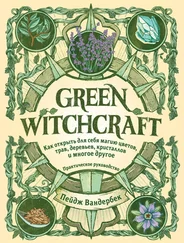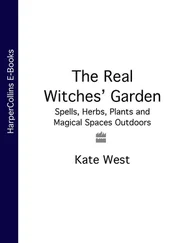Be physically still, absolutely silent, and just sense, listen and become more aware than usual. After just a few minutes, get up and unwind the circle, the opposite way to how you began. In your own words thank each Element and bid them farewell. You cannot command these powers to visit you, nor should you try to banish them. They are parts of the balanced universe and it is your awareness of them that is being awakened, not their physical presence, because they are everywhere all the time.
Always be polite and respectful, for it is a higher aspect of your own being you are really talking to at this stage. The more slowly and gently you practise these simple first steps, the more powerful they may become. Always take care, clear up, put things away, and really make an effort to feel the difference in the space you have temporarily made sacred.
In earlier times it was not necessary to sanctify an area for magic for among the natural places the world over there are extra special spots. High hills or mountain tops where the Sky Gods rest on their journeys; by springs and wells where the Goddess of the Inner meets the Goddess of the Outer Earth;
in caves, wombs of the Earth Mother, and in sunlit glades in the Wildwood, where jack-in-the-Green greets his children, human and animal alike. Some of these places had their power delineated by the construction of banks of earth, or waterways, or upright rings of stone, or even a single standing stone. Some were recognised as holy because of a special tree that grew there, or a strange rock not common to the landscape, or because a poet had a dream there, or someone was healed or received a vision of the future. These things can still happen if we are willing to give them credence, and seek out the places where they might occur.
Specially powerful are the Markers of Memory, quiet spots often under the spreading arms of hawthorn or beech, the trees of the Goddess of Spring, and of the Book. (In earlier times writing was carved onto boards of beech wood.) In a dreamlike state it is possible to hear again the timeless stories, the hero tales, the poems and verses which record the ancient wisdom, written on the breeze; of the hymns to the Goddess, sung in her own sacred voice, unheard in the clatter of the modern world. It was to such places that the harpers, bards and storytellers of old would resort, to gain inspiration or hear, coming through the gates from some Otherworld, the music of another sphere.
You will gradually come to recognise such places, many of them unregarded yet close to the habitations of ordinary people, accessible in the everyday world, once you know what to look for. You will also discover such sacred spots are almost invisible to ordinary people, too, and that by being there in the right frame of mind, you are protected and unseen. Those who perform their magic in such places are seldom disturbed by other people, nor is the work done there interfered with by the presence of children or animals nearby. These places are genuinely guarded, and it is up to you to learn to trust the Old Ones to defend your meditations or cloak your activities from the casual observer.
Much has been written about the need for swords and knives and cups and pentacles, but these are not all really necessary, especially to the solo witch or lone practitioner. What you might need can include a cup to drink from, made of pottery, wood, stone or horn, for such things are traditional; a really sharp knife to cut hazel dowsing rods, and a long walking stick or wand. Today the Swiss Army type knives are especially good, as they also contain corkscrews, awls for boring holes in wood or leather, and a file or even a small saw for rather thicker branches.
There is often also a screwdriver, essential for changing the plug on the ritual ghetto-blaster, or rewiring the sanctuary lamp! The blades should be kept clean, if you ever cut food or herbs, and sharp! There is no place in modern magic for blunt blades, either symbolically or practically. Knives should cut, with the least damage to the tree or other material, and the least damage to the owner ��� more people are cut by blunt blades because far more pressure is used in making the cut, so the point slips jaggedly into your hand’ A cut from a sharp blade will heal quickly and more cleanly too, if you have an accident. There is also the symbolic aspect of using knives, often called athames, for magical work. This might have been relevant in medieval times, but today it is old hat. The same applies to swords. These are expensive, awkward or dangerous to carry about, and their symbolism can easily be represented by something far less threatening.
A long, forked walking stick, sometimes referred to as a ‘stang’, is both practical and useful. Such staffs have always been associated with wizards, and they were often carried for protection or to help
with journeys on foot. In some pagan cultures they form the only altar, by being stuck into the ground at an appropriate place, and then being decorated with seasonal flowers or greenery, woven into a garland or twined up the staff.
With the addition of a candle or lamp in a jar at the foot you have all you need to welcome any of the Old Ones. You soon learn to find twining stems of ivy, or woven grasses, or fronds of honeysuckle which can quickly be plaited into a circle and stuck on the forks of the staff, and into that base garland flowers, buds, leaves and berries taken from the trees, sacred at any season, can be woven. At the end of the ritual the garland may be hung on a tree branch so that birds or animals may eat the seeds or berries, or you can scatter the leaves back into the earth.
Traditionally the sacred direction moves around the circle as the year passes, and the time at which celebrations are held varies through the day and night. Standing at midnight at Yule or Christmas, face North, seeking out the Star of Hope which guides the Child of Promise back to Earth. Deck your staff with holly and ivy, and twine it with ribbons as red as life. At Twelfth Night, before dawn, turn just a little to your right, to face North-east by North, if you have a compass with all the divisions.
Set a star at the top of the staff, twine golden ribbons, pine and other evergreen fronds about it (be careful if you use yew as the leaves are poisonous) and welcome the Three Wise Ones bringing gifts to you. At Candlemas, at first light, pick just a few snowdrops, early violets, and again ivy, symbol of the Spring Goddess, and place the staff to the North-east of the sacred circle. At the Spring Equinox or Easter bind a few yellow daffodils, sprays of jasmine and early white blossoms of the blackthorn in a wreath and place the staff to the East at the moment of sunrise.
When the hawthorn is in bloom, welcome the May queen with a garland of her flowers, and the wild blossoms from every hedge and meadow. It was taboo to take may blossoms indoors, for the Goddess prefers to be greeted in the green world, not in a house. Dance round her South-eastern symbol in the morning. At noon on Midsummer’s Day, garland your staff with St John’s Wort with its golden sunray flowers, and all the brightest and best of the wild profusion in pinks and blues, mauves and whites, and the fresh green leaves from all the summer trees, especially oak. Face South and welcome the power of the Sun at his height.
When Lammastide brings in the corn and the Harvest God dies in the field, dress the staff with red poppies, ears of wheat or barley or oats, flowers from the hedges, trails of dog’s mercury, goosegrass and bindweed, and look to the South-west where his flaming sun begins to descend in the afternoon. When the harvest of the fields is in, seek out the wild fruits, berries, seeds, and trailing old man’s beard to twine around your staff, at sunset, facing West. Lay nuts and apples at the foot of the pole as an offering to the wild things of nature and scatter crumbs and seeds.
Читать дальше
Конец ознакомительного отрывка
Купить книгу












